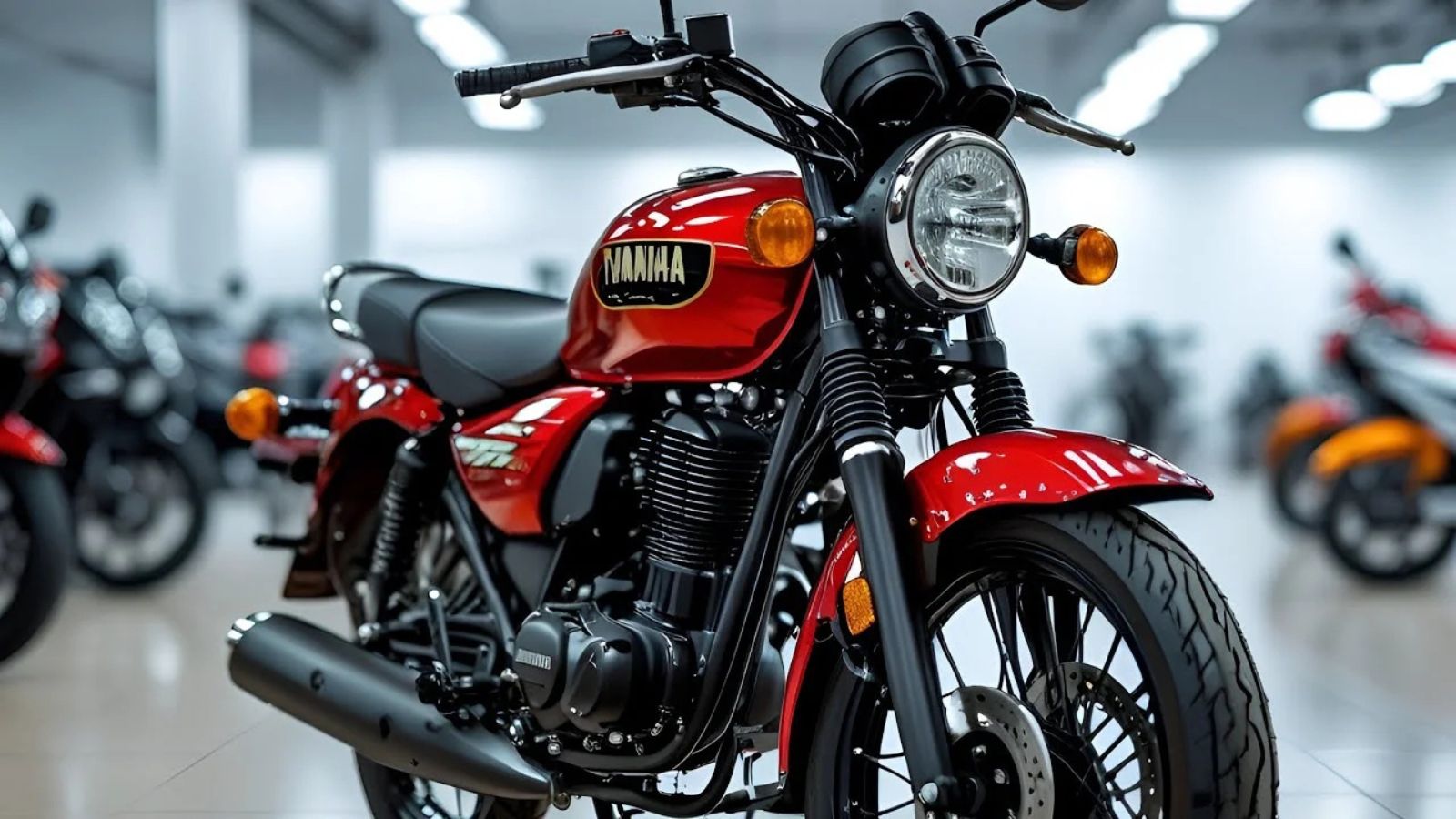The Yamaha RX100 is not just a motorcycle; it is an embodiment of nostalgia, freedom, and the adrenaline rush of pure two-stroke power. Introduced in India in the mid-1980s, the Yamaha RX100 quickly carved a niche for itself in the Indian motorcycle market. Its unmatched performance, striking design, and distinctive exhaust note gave it a cult-like following that persists to this day. Even though the production of the Yamaha RX100 ceased decades ago, its legend continues to thrive through passionate restorers, collectors, and loyal fans.
Yamaha RX100: Legendary Status and Key Specifications
When Yamaha launched the RX100 in India in 1985, it was intended to offer a blend of power and practicality to everyday riders. What followed was a motorcycling revolution. The Yamaha RX100 was far ahead of its time in terms of design, performance, and appeal. It boasted a 98cc, air-cooled, two-stroke engine that produced about 11 horsepower. This figure might seem modest today, but in the 80s and early 90s, it was a revelation, especially given the motorcycle’s lightweight frame.
Key Features of the Yamaha RX100:
| Feature | Details |
|---|---|
| Engine | 98cc, air-cooled, 2-stroke |
| Power | 11 HP (approx.) |
| Gearbox | 4-speed manual |
| Weight | Around 100 kg |
| Top Speed | Approximately 100 km/h |
| Brakes | Drum brakes (front and rear) |
| Suspension | Telescopic forks (front), swingarm (rear) |
| Fuel Efficiency | 25-30 km/l (depends on tuning) |
| Production Years | 1985 to 1996 |
| Legacy | Cult icon, cherished for raw performance |
The Yamaha RX100 was known for delivering an exhilarating ride experience. The bike’s quick throttle response and high-revving engine made it an ideal choice for both city rides and spirited sprints on open roads. Its lightweight body made it easy to maneuver, while the strong build quality ensured longevity even on rough Indian roads.
What Made the Yamaha RX100 So Popular?
Several factors contributed to the enduring popularity of the Yamaha RX100. For starters, it offered a thrilling ride experience that few other bikes of its time could match. Its two-stroke engine delivered instant torque, allowing riders to zip through traffic or race down highways with equal confidence. The sound of the Yamaha RX100 was equally iconic. Its crisp, sharp exhaust note became synonymous with speed and power.
Additionally, the Yamaha RX100 featured a sporty yet elegant design. With its rounded headlamp, teardrop-shaped fuel tank, and clean lines, the bike had a timeless aesthetic. It exuded simplicity without compromising on style. The chrome detailing and bright paint jobs added to its visual appeal, making it stand out in a crowd.
Another major advantage of the Yamaha RX100 was its simplicity and ease of maintenance. The motorcycle was built using straightforward mechanical components, which made repairs and servicing relatively simple. For many mechanics and DIY enthusiasts, the RX100 became a favorite project bike.
Performance That Set a Benchmark
Performance was the crown jewel of the Yamaha RX100. At a time when most bikes struggled to touch the 80 km/h mark, the RX100 could easily cruise past 100 km/h. Its acceleration was linear yet aggressive, a trait made possible by the two-stroke engine’s inherent characteristics.
Moreover, the Yamaha RX100 had a well-balanced chassis that provided excellent stability even at higher speeds. Its suspension setup, while basic, was tuned well enough to absorb the bumps and potholes common on Indian roads. Braking was handled by drum brakes at both ends, which were adequate for the bike’s weight and power.
Yamaha RX100: Comfort and Daily Usability
Despite being performance-focused, the Yamaha RX100 didn’t compromise on comfort. The seat was long and well-cushioned, making it suitable for both riders and pillion passengers. The riding posture was upright, allowing for a comfortable commute, whether for daily errands or long rides.
Fuel efficiency was another area where the Yamaha RX100 performed reasonably well. Though not as frugal as modern four-stroke engines, the RX100 delivered about 25 to 30 km/l, depending on riding style and engine tuning. For a bike that prioritized performance, this was a respectable figure.
The Cult Following and Lasting Impact
What truly sets the Yamaha RX100 apart from other motorcycles is the intense loyalty it commands. Even today, decades after production ended, the Yamaha RX100 remains a collector’s favorite. Bike enthusiasts across India (and even beyond) search for well-preserved or restorable models to bring them back to life.
There are dedicated RX100 clubs, online forums, and social media groups where enthusiasts share tips on restoration, modifications, and performance enhancements. The Yamaha RX100 is often the first bike that many collectors add to their garage. Some even go as far as importing parts or replicating the original paint schemes to maintain authenticity.
Racing and Modification Culture
The Yamaha RX100 also has deep roots in the Indian racing and street drag community. Its engine was incredibly receptive to tuning and modifications. From upgraded carburetors and expansion chambers to ported cylinders and performance exhausts, enthusiasts found countless ways to extract more power from the Yamaha RX100.
Its lightweight and punchy engine made it an ideal candidate for amateur drag racing. Modified RX100s could produce far more horsepower than the stock version, making them capable of outperforming even larger bikes in short sprints.
FAQs About the Yamaha RX100
Why was the Yamaha RX100 discontinued?
The Yamaha RX100 was discontinued primarily due to stricter emission norms introduced in the mid-1990s. Two-stroke engines, while powerful and lightweight, produce more pollutants compared to modern four-stroke engines. Yamaha had to stop production to comply with these environmental regulations.
Is the Yamaha RX100 still available for purchase?
Yamaha officially stopped producing the RX100 in 1996. However, the bike is still available in the pre-owned market. Well-maintained or restored Yamaha RX100 models are in high demand and can fetch premium prices.
How much does a used Yamaha RX100 cost today?
The price of a used Yamaha RX100 varies based on its condition, originality, and location. A basic model in working condition might cost around ₹50,000, while fully restored or rare editions can go as high as ₹1.5 lakh or more.
Can the Yamaha RX100 be used as a daily commuter?
Yes, the Yamaha RX100 can be used for daily commuting if it is well maintained. However, spare parts are becoming increasingly rare, and fuel efficiency may not be on par with modern motorcycles. Still, many riders continue to use it daily due to its reliability and performance.
What makes the Yamaha RX100 faster than other bikes of its era?
The Yamaha RX100’s two-stroke engine offered quicker throttle response and better power-to-weight ratio compared to four-stroke engines. Its lightweight frame and aggressive tuning allowed it to outperform many bikes with larger engines.
Conclusion: The Legacy Lives On
In a world increasingly dominated by modern, fuel-injected, and feature-loaded motorcycles, the Yamaha RX100 serves as a powerful reminder of simpler times. It was a machine built for pure riding pleasure. With its raw power, responsive handling, and unmistakable style, the Yamaha RX100 remains one of the most iconic motorcycles to ever grace Indian roads.
Its legacy continues through restorers, collectors, and loyal fans who treat the bike not just as a vehicle but as a prized possession. For those lucky enough to ride or own a Yamaha RX100, it is more than transportation—it’s an emotion, a symbol of freedom, and a timeless classic that refuses to be forgotten.
Some Important Link
| Telegram Group | Click Here |
| WhatsApp Group | Click Here |
| Home Page | Click Here |













